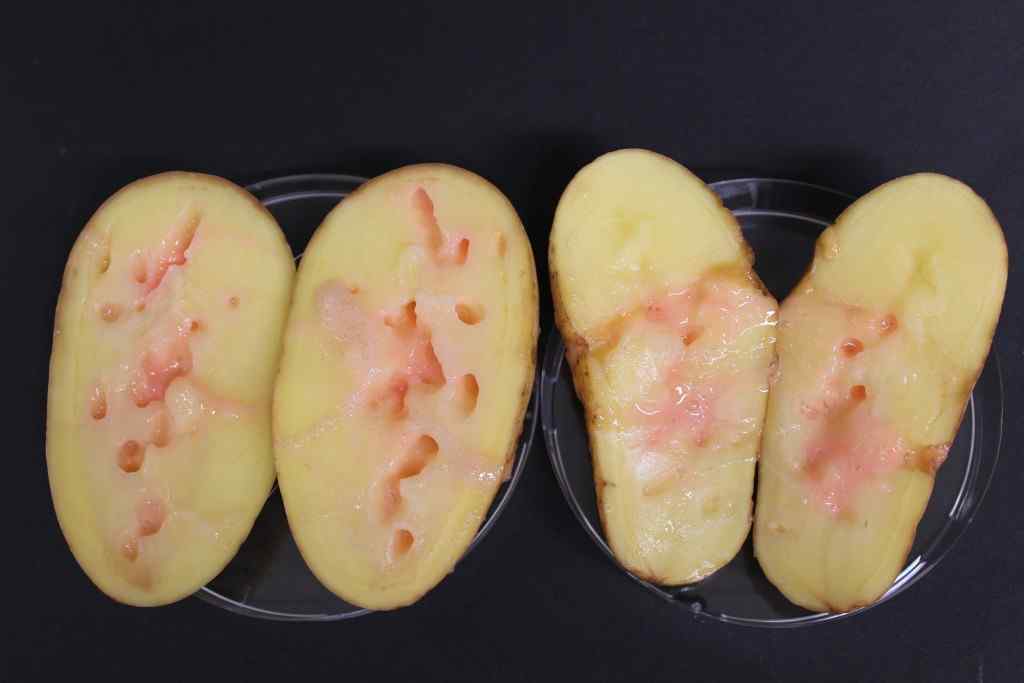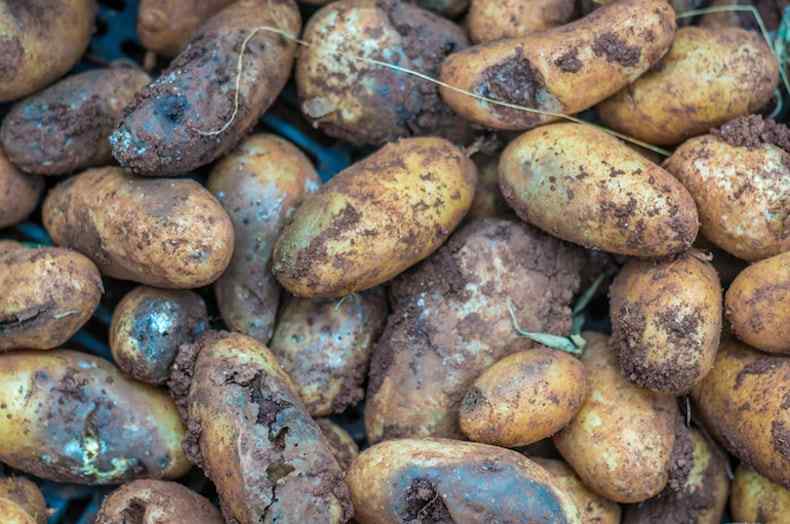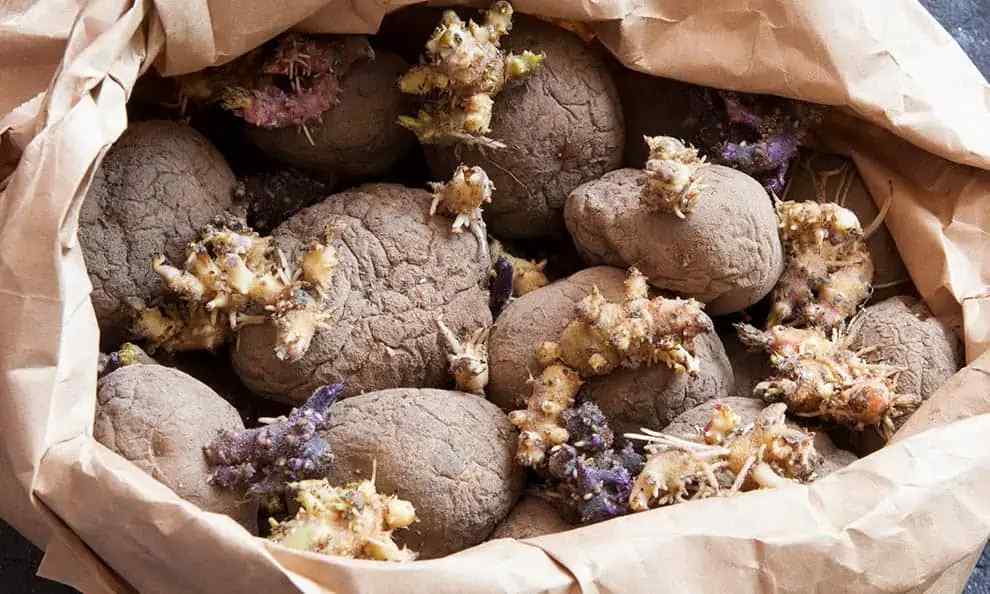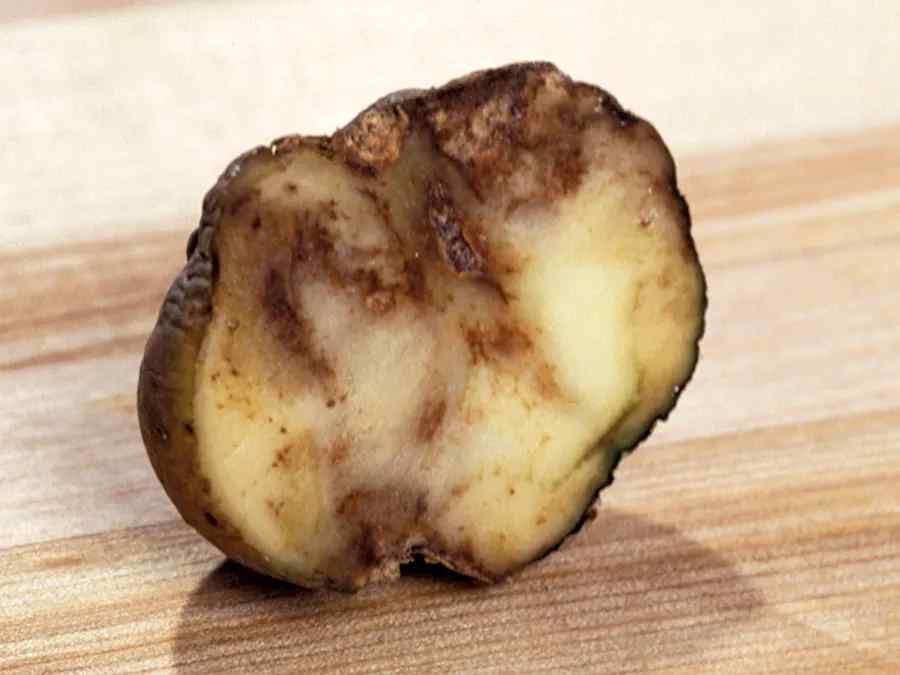Ever reach into your potato stash and discover a moldy surprise? Mold on a potato can turn a recipe from delightful to dreadful. But don’t panic! Just like you, potatoes sometimes have unwelcome visitors.
The good news? A moldy spot doesn’t automatically mean the whole bag is bad. Often, you can simply cut away the affected area and scrub the rest to save them. But if the mold is widespread or the potato feels mushy, it’s best to toss it. When in doubt, err on the side of caution!
Here’s how to rescue your spuds and get them back on track to becoming a delicious meal.
Why Mold Grows on Potatoes & How Mold Spreads

Potatoes are prone to growing mold when stored in warm, humid, and dark environments. Mold spores that are too small to see can rapidly multiply and spread in these conditions, ruining your potatoes.
Common potato mold types include Fusarium, Penicillium, and Phytophthora. They thrive between 50-65°F and need moisture to grow. Good ventilation helps prevent mold growth.
Mold can quickly transfer from one potato to another, especially when they’re packed close together. Some potato varieties like Russets are more vulnerable to mold than others.
The visible fuzzy mold is the final stage of the mold life cycle. If you spot the mold growth early enough while the spores are still microscopic, you may be able to salvage some of the potatoes.
However, once the fuzz appears, the affected potatoes are no longer edible and should be discarded.
Can You Salvage Moldy Potatoes?

If you notice mold on your potatoes, don’t discard them right away – some may still be usable if you take quick, careful action. Look for any soft, mushy, or slimy areas, which means the potato is too spoiled to save.
For potatoes that are firm with just a few small moldy spots, cut off at least an inch all around the mold. When in doubt, play it safe and toss it out.
| Situation | What to Do |
|---|---|
| Firm potatoes with small spots of mold | Remove 1″+ around & under mold |
| Heavy mold coverage, soft/mushy texture | Discard the entire potato |
Mold spores spread rapidly, so removing them completely once they’ve started growing is very difficult. A potato mostly covered in mold or with a soft, mushy feel should be thrown away to prevent any health risks.
Slightly marred potatoes you’d rather not eat can be composted or even planted to start your own potato crop. Prioritize safety, but avoid wasting them unnecessarily.
Is It Better To Cut Off The Rotten Part of a Potato or to Dust it?

Don’t cut away moldy parts of a potato or try to salvage it with baking soda. Mold spores can invisibly spread throughout the entire potato, even if only part looks moldy. Eating any mold can potentially cause illness, allergic reactions, or respiratory issues.
Carefully inspect potatoes before using. Discard any with discoloration, dark spots, obvious mold, or a soft/mushy texture. When in doubt, throw it out if it looks or smells off.
Proper storage is key to potato freshness. Keep them in a cool, dark, dry place. If you find a moldy potato, discard it immediately to prevent spores from contaminating the others. Prioritize food safety over trying to salvage a questionable spud.
What Could Happen To You If You Eat a Potato With a Little Mold On It?

Eating a potato with even a small amount of mold can cause illness. Symptoms may vary from mild allergic reactions to severe mycotoxin poisoning, based on the mold type and individual sensitivity.
Potential effects include nausea, vomiting, diarrhea, respiratory problems, liver damage, or neurological issues.
Predicting exact reactions is challenging, but those with weakened immune systems, allergies, or respiratory conditions face higher risks. Extra precautions are advised for children and the elderly.
This information isn’t a substitute for professional medical advice. If concerned about consuming a moldy potato, promptly consult a healthcare provider for guidance.
The wisest approach is avoiding the risk altogether. Discard any potato showing signs of mold and opt for a fresh, mold-free alternative.
Prioritize your well-being and always inspect potatoes carefully before consumption. With mindful choices, you can protect your health.
What Happens If You Accidentally Cook a Moldy Potato?

Eating a potato with mold can be dangerous. The toxins produced by mold aren’t destroyed by cooking and can actually become more concentrated when heated.
Even cutting off the moldy part won’t guarantee the rest is safe, as the toxins may have spread throughout the potato.
If you discover mold on a potato while preparing a dish, it’s best to discard the entire meal to be safe. It’s disappointing, but not worth the health risk of consuming mold toxins.
Proper potato storage helps prevent mold growth. Store them in a cool, dark, dry location and inspect them for any signs of mold before use. Taking these precautions will help ensure your meals are mold-free and delicious.



